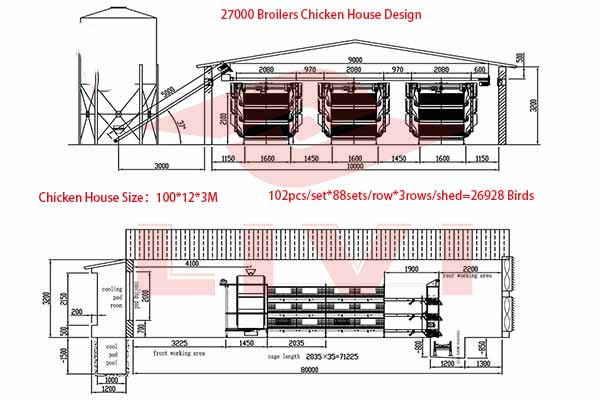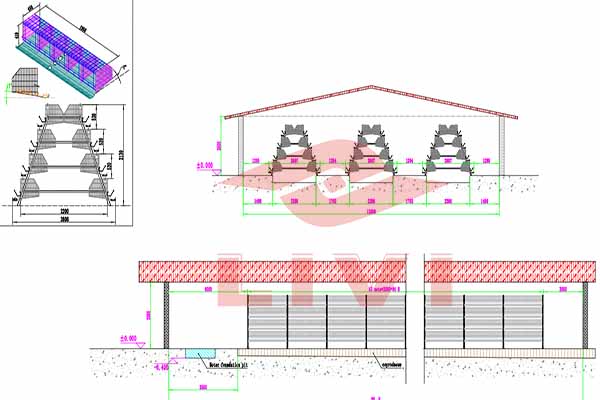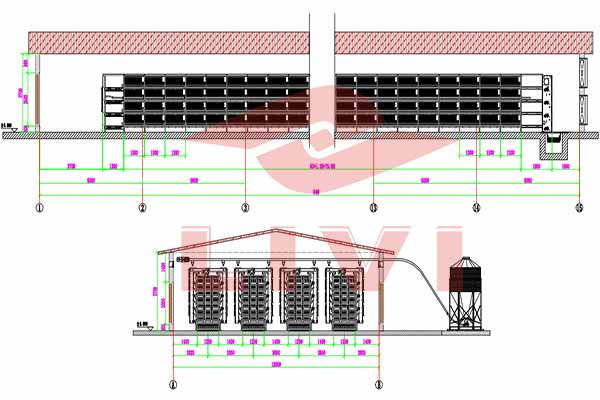Automatic Poultry Feeding System for 400,000 Chickens in Uganda: A Comprehensive Guide
Uganda’s poultry industry is rapidly growing, and for good reason. With a demand for poultry products on the rise, efficient farming practices are crucial for success. One such practice is the implementation of an automatic poultry feeding system for large-scale operations like a 400,000 chicken farm. In this article, we will discuss the benefits, components, and potential challenges of such a system.
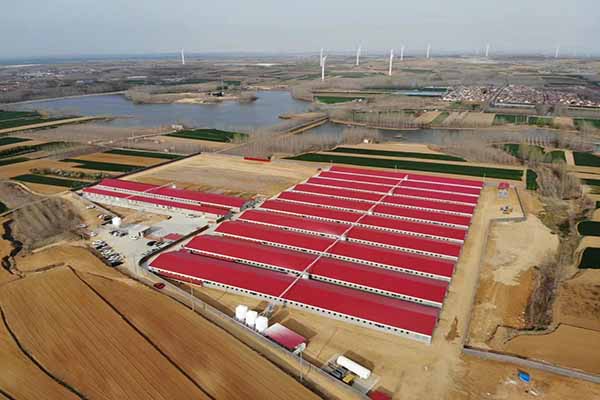
Benefits of an Automatic Poultry Feeding System
- Consistency: Ensures that chickens receive the right amount of feed at the right time, promoting consistent growth and health.
- Efficiency: Reduces labor costs by automating the feeding process, allowing farmers to focus on other aspects of the farm.
- Accuracy: Precise feeding can lead to better feed conversion ratios, reducing costs and increasing profitability.
- Sanitation: Minimizes the risk of diseases spread through manual feeding, as the system can be easily sanitized.
Components of an Automatic Poultry Feeding System
| Component | Description |
|---|---|
| Feeding System | Automated feeders that dispense feed at set intervals. |
| Control Unit | Manages the feeding schedule and can be programmed for different stages of growth. |
| Sensors | Monitor feed levels and chicken behavior to optimize the feeding process. |
| Software | Tracks feeding data and generates reports for analysis. |
Challenges and Considerations
- Initial Investment: The cost of purchasing and installing an automatic feeding system can be high.
- Technical Knowledge: Operators need to be trained to manage and maintain the system.
- Power Supply: Ensure a reliable power source for the system, as outages can disrupt feeding schedules.
- Integration: Consider how the system will integrate with other farm operations.
According to a study by the University of Ghana, the average feed conversion ratio for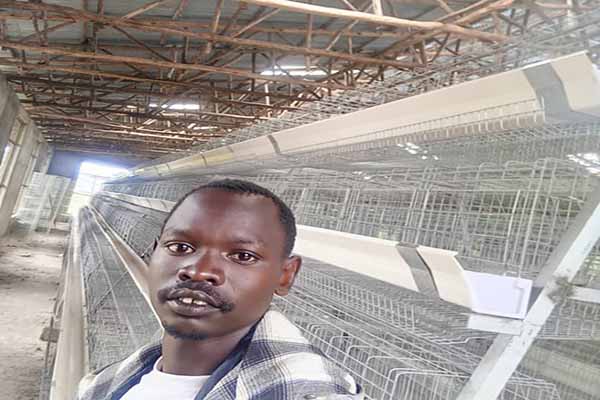 chickens in Uganda is 2.7. An efficient feeding system could potentially reduce this ratio to 2.5, saving farmers approximately 8% in feed costs per year.
chickens in Uganda is 2.7. An efficient feeding system could potentially reduce this ratio to 2.5, saving farmers approximately 8% in feed costs per year.
Conclusion
Implementing an automatic poultry feeding system for a 400,000 chicken farm in Uganda can significantly improve efficiency, profitability, and overall farm management. While there are challenges to consider, the long-term benefits make it a worthwhile investment for poultry farmers and investors alike.
For more information on automati c poultry feeding systems and to receive a free, personalized design and equipment quote, please feel free to leave a comment below or contact us directly.
c poultry feeding systems and to receive a free, personalized design and equipment quote, please feel free to leave a comment below or contact us directly.


